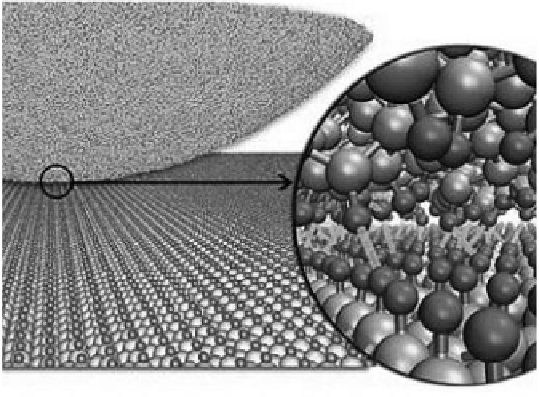Environmental Engineering Reference
In-Depth Information
4.1 INTRODUCTION
Scientists from the University of Wisconsin-Madison (USA) managed to prove
that the laws of friction for the nanostructures do not differ from the classical
laws.
The friction of surface against the surface in the absence of the interlayer be-
tween the liquid materials (so-called dry friction) is created by irregularities in the
given surfaces that rub one another, as well as the interaction forces between the
particles that make up the surface.
As part of their study, the researchers built a computer model that calculates
the friction force between nano-surfaces (Fig. 4.1). In the model, these surfaces
were presented simply as a set of molecules for which forces of intermolecular
interactions were calculated.
FIGURE 4.1
Computer model of friction at the nanoscale. The right shows the surfaces
of interacting particles (Friction laws at the nanoscale).
As a result, scientists were able to establish that the friction force is directly
proportional to the number of interacting particles. The researchers propose to
consider this quantity by analog of so-called true macroscopic contact area. It is
known that the friction force is directly proportional to this area (it should not be
confused with common area of the contact surfaces of the bodies).
In addition, the researchers were able to show that the friction surface of the
nano-surfaces can be considered within the framework of the classical theories of
friction of non-smooth surfaces.


Search WWH ::

Custom Search